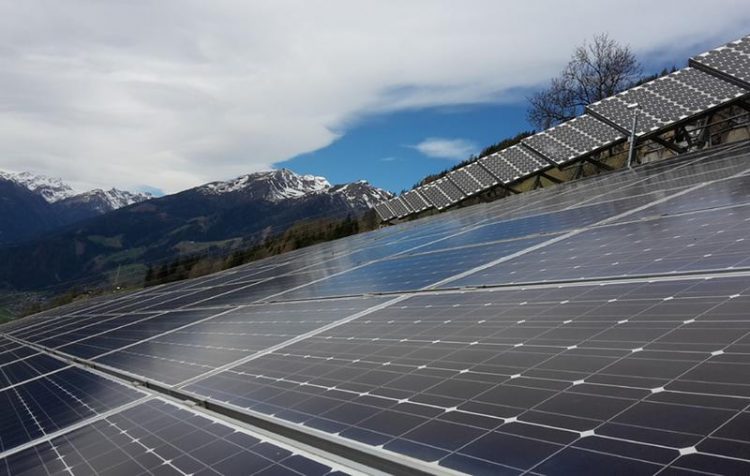Photovoltaic Systems adapted to their environment – project Infinity successfuly completed

High-altitude radiation, sand, humidity or snow - different environmental conditions have an impact on solar energy output. © ENcome Energy Performance GmbH
Photovoltaic (PV) systems are in use around the world in all kinds of different environments, including deserts, rainforests, temperate climates and high mountain regions. However, until now there have only been standardised systems for generating solar energy, which are not designed to be adaptable for different environmental conditions.
The three-year Austrian INFINITY project investigated how the entire photovoltaic system – starting with materials, components and processes – can be adapted to meet the demands of different environments and regions.
PIONEERING RESULTS
Led by the CTR Carinthian Tech Research centre, 14 project partners from science and industry conducted research into solutions to suit different environments in order to optimise energy output and increase system lifetimes.
This pioneering research has generated huge international interest, with over 1,200 environmental datasets being analysed from pv systems in Asia, the USA, South America and other locations around the world.
The results and opportunities for optimisation have been published in over 60 scientific journals worldwide, a patent application has been filed and the researchers have also played their part in global standardisation initiatives.
Project leader Dr Christina Hirschl from CTR said: “This research has allowed us to make a huge leap forward in terms of quality for photovoltaics. The systems have been optimised for different environments, and we can make specific service life predictions and maintenance recommendations for individual environments.”
The project was funded by the Austrian Climate and Energy Fund as part of its energy research programme. CEO Theresia Vogel said: “Austrian solar technology is in demand around the world.
Projects such as Infinity help make Austrian innovations a success in the global market – and in every climate – and ensure that Austria will be a research hub for a long time to come. Infinity has therefore played a crucial role in implementing #mission2030, the Austrian government’s climate and energy strategy.”
OUTPUT INFLUENCED BY ENVIRONMENT
Factors including extreme temperatures, moisture, salt levels, sand, high-altitude radiation and/or unstable electrical networks have long-term effects on PV systems and can lead to reduced output and shortened system service life over time.
“What makes this project unique is its aim, which was to analyse the entire value chain, from materials and components through to manufacture, installation and maintenance, and to improve it using solutions designed for specific environments”, continued Hirschl.
WIDE-RANGING RESEARCH
The research team carried out a comprehensive error analysis to determine how individual materials, modules and inverters behave in isolation and as an overall system in different environments and climates. Using this analysis, new solutions were developed for every part of the system, such as embedding materials, film-based backsheets, cell connectors, inverters and electrically conductive adhesives. The team also developed guidelines adapted to the various technologies and locations for effective monitoring and maintenance of PV systems.
Horst Sonnleitner, technical manager at international PV company ENcome Energy Performance, said: “The research results have given us answers to a number of long-standing questions. We now have methods and models to achieve maximum energy output no matter what the location.”
RESEARCH TEAM
INFINITY was a three-year collaborative research project (November 2015 to October 2018) involving 14 partners from research institutes, SMEs and large international companies.
Project leader: CTR Carinthian Tech Research AG
Scientific leader: AIT Austrian Institute of Technology GmbH
Nine partners from industry: ENcome Energy Performance, Fronius, Infineon Technologies Austria, Isovoltaic Solinex, Polytec PT, PVI, PVSV, PVP Photovoltaik, Ulbrich of Austria Five partners from scientific research institutes: AIT Austrian Institute of Technology, CTR Carinthian Tech Research, Vienna University of Applied Sciences, OFI Research Institute for Chemistry & Technology, PCCL Polymer Competence Center Leoben
As well as the project’s technical aims, a culture of innovation was created which will strengthen Austria’s overall position as a research location, and this success has also been reflected in follow-up projects: The project “Extreme” was submitted within the energy research program to investigate extreme desert operations and the next Austrian flagship project called “Sustainable Photovoltaics”, researching targeted and sustainable recycling, has already begun.
Dr Christina Hirschl
Research Manager Smart Systems
CTR Carinthian Tech Research
https://www.ctr.at/en/news/news-press/details/news/photovoltaik-systeme-die-sich…
Video in German: https://www.youtube.com/watch?v=nozi0j0SYIA&t=112s
Media Contact
More Information:
http://www.ctr.at/All latest news from the category: Power and Electrical Engineering
This topic covers issues related to energy generation, conversion, transportation and consumption and how the industry is addressing the challenge of energy efficiency in general.
innovations-report provides in-depth and informative reports and articles on subjects ranging from wind energy, fuel cell technology, solar energy, geothermal energy, petroleum, gas, nuclear engineering, alternative energy and energy efficiency to fusion, hydrogen and superconductor technologies.
Newest articles

Long-sought structure of powerful anticancer natural product
…solved by integrated approach. A collaborative effort by the research groups of Professor Haruhiko Fuwa from Chuo University and Professor Masashi Tsuda from Kochi University has culminated in the structure…

Making a difference: Efficient water harvesting from air possible
Copolymer solution uses water-loving differential to induce desorption at lower temperatures. Harvesting water from the air and decreasing humidity are crucial to realizing a more comfortable life for humanity. Water-adsorption…

In major materials breakthrough
UVA team solves a nearly 200-year-old challenge in polymers. UVA researchers defy materials science rules with molecules that release stored length to decouple stiffness and stretchability. Researchers at the University…



